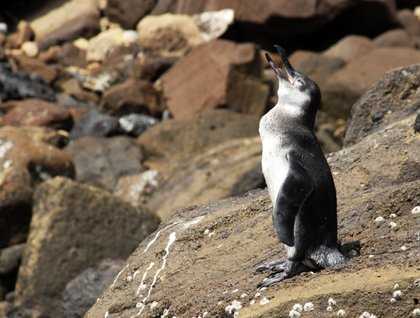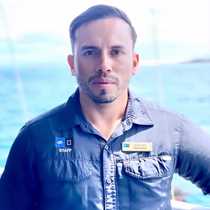As we arrived at the western side of the Galápagos during our early morning navigation, we spotted a couple of pilot whales and a school of about 200 bottlenose dolphins. All the volcanoes of Isabela Island were seen along the coast. The geology of the place could not have been better.
We celebrated after crossing the equator and, following breakfast, we went on a Zodiac ride along the coast of Punta Vicente Roca, situated at the northern site of Isabela. We were amazed by the huge cliffs found in the area and all the variety of species found on the coast and in the water. We were lucky to spot a school of golden rays, many Pacific green sea turtles, Galápagos penguins, and even a school of about 12 hammerheads on the surface of the ocean near the cove where all the sea turtles and the flightless cormorants were swimming.
As we went further into the open ocean, we spotted three ocean sun fishes. The largest bone fish on the planet, these creatures lifted their dorsal fins out of the water, which helped us to spot them from the Zodiacs. After the ride we went snorkeling with sharks, penguins, and sea turtles.
In the afternoon we had a dry landing at Espinoza Point, the only visitor site on Fernandina Island, where we encountered hundreds of large marine iguanas basking in the sun, retaining body heat, and staying together over night. This is the youngest section of Fernandina, which is also the most preserved island of the Galápagos. Small colonies of sea lions and flightless cormorants were also seen. We went back in time to explore the pureness of Galápagos at its youngest stage.







